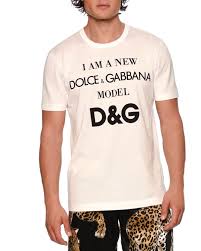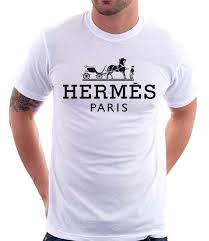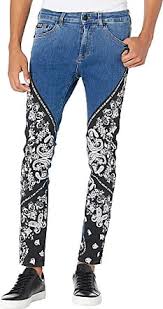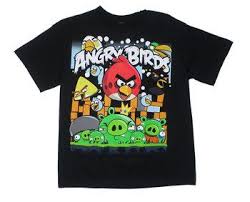Бұл материал сайт қолданушысы жариялаған. Материалдың ішінде жазылған барлық ақпаратқа жауапкершілікті жариялаған қолданушы жауап береді. Ұстаз тілегі тек ақпаратты таратуға қолдау көрсетеді. Егер материал сіздің авторлық құқығыңызды бұзған болса немесе басқа да себептермен сайттан өшіру керек деп ойласаңыз осында жазыңыз

Бонусты жинап картаңызға (kaspi Gold, Halyk bank) шығарып аласыз
1 жыл бойы тегін жүктеу мүмкіндігіне ие болыңыз!

жеңілдік
English Insciptions on Clothes

PREPARED FOR SPECIAL COMPETITION “ZERDE”
SECONDARY SCHOOL №36 NAMED AFTER «KAZYBEK BE »
”English inscriptions on clothes as an extra-linguistic factor influencing the culture of teenagers”
Author:
Liliana Sharapova,
Pupil of the 4th form;
Supervisor:
Makbal Mussagaliyeva
Teacher of English
Shymkent-2020
Аннотация
Ағылшын тілінде жазылған бұл мақалада киімдегі жазулар құбылысы жасөспірімдердің мәдениетіне әсер ететін экстралингвистикалық фактор ретінде қарастырылады. Автор заманауи сән кез-келген әлеуметтік-психологиялық қауіп-қатерге әкеп соқтырмайтын киімдегі жазулардың мазмұны үшін жауап бермейді деген идеяны алға тартты, біз күнделікті киімде жазулар мен іздер сияқты қайтымсыз шындыққа кезігеміз. Адамдар кейде тіпті оларда жазылғанды түсінбейтін немесе оқымайтын киімді сатып алады. Ағылшын тілінде сөйлейтіндер басылған сөз тіркестерінің, сөздердің және сөз тіркестерінің мағынасын түсінетін ағылшын жазбалары бар киімдер сатып алуға ынталандырады. Тіл мен шынайы әлем арасында әрдайым ана сөйлеуші тұрады, ол әлемді өзінше қабылдайды және жіктейді. Сондықтан, кейбір адамдар үшін бұл маңызды бренд, ал басқалары үшін - бұл олардың сатып алу шешімінде маңызды рөл атқарады. Мақалада футболка жазбаларын жаңа қалалық бұқаралық ақпарат құралдары ретінде зерттеу ұсынылған. Ұрандары мен басылымдары бар футболкаларды киетіндер саны артып келеді. Мақалада бұл құбылыс коммуникативті лингвистика аясында қарастырылады. Белгілі бір медиа-дискурста көрінетін элементтердің семантикалық құрылымының коммуникативтік маңызы зерттелді. Мұнда 5 мыңға жуық футболка жазбалары талданды. Жазулар алып жүретін семантикасына байланысты бірнеше тақырыптық топтар бөлініп шығады. Зерттеу лингвистикалық және мәдени түсініктердің ерекшеліктерін анықтауға, танымал даналық пен құндылық бағдарын кристалдандыруға бағытталған. Зерттеу нәтижелері жаңа медиа-мәтінде жиі кездесетін ұғымдарды анықтайды.
Аннотация
В этой статье, написанной на английском языке, феномен надписей на одежде рассматривается как экстралингвистический фактор, влияющий на культуру подростков. Автор продвигает идею о том, что современная мода не несет ответственности за содержание надписей на одежде, не несущих никакой социально-психологической угрозы. Каждый день мы сталкиваемся с такой необратимой реальностью, как надписи и принты на повседневной одежде. Люди иногда покупают одежду, даже не понимая или не читая того, что на ней написано. У тех, кто говорит по-английски, есть стимул покупать одежду с английскими надписями, понимая значение напечатанных фраз, слов и словосочетаний. Между языком и реальным миром всегда стоит носитель языка, который воспринимает и классифицирует мир по-своему. Поэтому для одних людей действительно важен бренд, для других значение играет наиболее важную роль в их решении о покупке. В статье представлено исследование надписей на футболках как нового городского медиа. Все больше и больше людей носят футболки с лозунгами и принтами. В статье данный феномен рассматривается в контексте коммуникативной лингвистики. Исследуется коммуникативная значимость семантической структуры элементов, проявляющаяся в данном медиадискурсе. Было проанализировано около 5 тысяч надписей на футболках. В зависимости от семантики, которую несут надписи, выделяют ряд тематических групп. Исследование направлено на выявление особенностей языковых и культурных концепций, кристаллизацию народной мудрости и ценностных ориентаций. Результаты исследования позволяют выявить наиболее часто встречающиеся понятия в новом медиатексте.
Abstract
This article written in English considers the phenomenon of inscriptions on clothes as an extralinguistic factor affecting the culture of adolescents. The author advances the idea that modern fashion is not responsible for the content of inscriptions on clothes which don`t entail any social-psychological threat.Every day we encounter such an irreversible reality as inscriptions and prints on our casual clothes. People buy garments sometimes even not understanding or reading what is written on them. Those who speak English are motivated to purchase clothes with English inscriptions understanding the meaning of the printed phrases, words and word-combinations. There always stands a native speaker between a language and a real world, who perceives and classifies the world in his own way. Therefore, for some people it is the brand which is really important, for others – the meaning plays the most significant role in their buying decision. The article presents a study of the T-shirt inscriptions as new urban media. More and more people wear T-shirts with slogans and prints. The article considers this phenomenon in the context of communicative linguistics. There is investigated the communicative significance of the semantic structure of elements, which is manifested in the certain media discourse. There were analysed approximately 5 thousand T-shirt inscriptions. Depending on the semantics carried by the inscriptions, there are singled out a number of thematic groups. The study is aimed at identifying features of linguistic and cultural concepts, crystallizing popular wisdom and value orientations. The results of the study reveal the most frequently occurred concepts in the new media text.
CONTENTS
|
INTRODUCTION ………………………………………………………. CHAPTER I HISTORICAL AND SEMANTIC CHARACTERISTICS OF INSCRIPTIONS ……………………………………………………… 1.1 FROM THE HISTORY OF INSCRIPTIONS ON CLOTHES……… 1.2 SEMANTIC CLASSIFICATION OF INSCRIPTIONS ON CLOTHES.……………………………………………………………….. CHAPTER II SOCIOLINGUISTIC ASPECT OF INSCRIPTIONS ON CLOTHES……………………………………………………………….... 2.1 LANGUAGE OF THE INSCRIPTIONS ON CLOTHES…………… 2.2 REFLECTION OF MODERN SOCIETY IN THE INSCRIPTIONS ON CLOTHES…………………………………………………………… CONCLUSION ………………………………………………………… LITERATURE…………………………………………………………….. APPENDIX A Questionnaire …………………………………………….. APPENDIX B The Results of the Survey ………………………………... APPENDIX C …………………………………………………………… |
3 4 4 6 8 8 9 10 11 12 13 16
|
Modern young people like to stand out. Almost all teenagers wear clothes with ornaments in the form of inscriptions. Such clothes can tell us a lot about a person, in particular, about the age, the level of English language proficiency, as well as the sphere of interests of its owner. And quite a number of students do not fully understand the meaning of written English, however, they wear such clothes because they are fashionable, beautiful or even for some other reasons. Most students do not attach much importance to inscriptions on their clothes, which in turn can contain obscene and offensive meaning, grammar and spelling mistakes. However, we’d like to know if the owners understand the meaning of words on their clothes, especially if they are written in a foreign language? Our research is aimed at finding answers to these questions.
The problem is that not everyone knows the meaning of the words written on the clothes.
Our work is about the contents of the English inscriptions on clothes of teenagers.
The purpose is establishing the dependence of the semantic load labels on the clothes on the level of English proficiency.
Objectives:
-
To analyze English inscriptions on clothes and reveal their influence on the culture of teenagers
-
To translate popular English inscriptions on clothes into Russian and present the items.
-
To conduct surveys and interviews with students.
-
To analyze the results of the survey and make a conclusion.
The object of the research is inscriptions in English on pupils’ clothes.
The subject of the research is the information given by English inscriptions on the clothes.
The hypothesis: We think that the orientation of students of our school in English inscriptions on clothing depends on the level of language proficiency.
This work will be useful and interesting as it will allow pupils to pay attention to the translation of the text. We hope they will use the information, which should reflect the real interests of its owner.
The practical significance of our research work is that after meeting with it people will think about English inscriptions on their clothes. Also our work can be used for extra English courses.
We used such methods as:
-
The analysis of the theoretical literature;
-
The method of the public opinion poll
-
The method of comparison
-
The research method
-
The classification method
CHAPTER 1 HISTORICAL AND SEMANTIC CHARACTERISTICS OF INSCRIPTIONS
1.1 FROM THE HISTORY OF INSCRIPTIONS ON CLOTHES
Inscriptions on clothes appeared many centuries ago. The earliest inscriptions appeared in ancient Greece. Embroideries on belts told the owners’ names, or there were names on jewelry.
In many Italian and German portraits of the end of the 15th and 16th centuries you can see inscriptions which are twisted in an ornament of men's shirts, in women’s corsages. The noble family motto, or names of owners of these portraits or dresses are usually written in Latin. Very provocative inscriptions were always written on women’s garters.
We can find a lot of ornaments in jewelry where letters and phrases are twisted in a pattern . Don't think, that inscriptions on clothes are an exclusive invention of a mass street fashion. Many famous couturiers did not avoid this expressive means. Franco Moschino was the greatest "hooligan" in the Italian fashion. The most well-known of Moschino’s models is a suit with an inscription on a waist «the Waist from money», (it is possible to read and as «waste of money» - it has collapsed on the client exactly a week later), a dress-plastic package, a hat-plane and a hat-hanger.
The models with inscriptions and accessories with gold volume letters «MOSCHINO» - bags and belts- brought him a success. The texts of inscriptions were ironic and gave new sense to classical forms of clothes. The inscription on a knitted dress “can be put on Me, but it is impossible to remove!” ; “Expensive jacket” on a jacket, “This shirt costs one million lyres” on a shirt. Moschino understood that they shouldn’t be too serious about fashion. Though his clients often turned into «walking advertising» of Moschino mark wearing jumpers, dresses, hats, bags and belts with his name. He transformed the small label sewn from a wrong side, into huge slogans on the most visible and unexpected places.
Christian Dior’s collection of 1955 was created on the theme of three letters - Н, A and Y. All dresses had such outlines, and their seams repeated these three letters, it was the most fashionable collection in the season of 1955.
Just at that time the young Yves Saint Laurent joined Dior. Probably, the letter Y also symbolised his arrival.
In 1985 Jean-Paul Gaultier created the models decorated with inscriptions with the use of Cyrillics for «Russian collection» autumn/winter of 1986 - 1987 (the fashion on the Soviet symbolics began in the Reorganization epoch).
This surprising collection included slavic letters - Cyrillics, an ornament "Jean-Paul Gaultier” was written on the clothes. It was a hit, all Paris wore things with this logo, especially everybody liked the letter Ж, because it is similar to a bug or any Chinese ornament. Then Cyrillics became fashionable in general , slavic letters were often used in jersey, sweaters, jackets, in many accessories in the late 80-s.


Nowadays we can meet this too: for example, many fashionable houses use the stylized letters in their logos.
For example, the house of Hermes uses the letter Н in buckles of belts and in fasteners of the well-known bags. The letter D from Christian Dior is used in ornaments and is twisted often in clothes too. Not speaking about D&G Dolce & Gabbana…
For «Russian collection» of autumn/winter 1986 - 1987 Gaultier created the models decorated with inscriptions with the use of Cyrillics (the fashion on the Soviet symbols began during the Reorganization epoch). Try to transform the inserted text into drawing in the graphic editor. The inscription will simply turn into a set of the pixels scattered on the canvas. The same will be with hieroglyphs, Arabian, for foreigners - with our Cyrillics. Unknown letters on clothes turn into an ornament, nice both by their form, and with the secret hidden in it. No wonder that designers like to use the fonts stylised under foreign alphabets.
In general, it is necessary to be careful with inscriptions on clothes. As people around see them as the words said aloud by the owner of fashionable clothes. Or otherwise if you do not support the words written on your clothes, what for have you put it on yourself? So, to paraphrase the famous phrase we can say we are responsible for what is written on our clothes.
Not so long ago in Germany and China a real international scandal on the topic broke out. Over the past couple of years it was recorded almost twenty cases in which for obscure inscriptions on T-shirts made in Arabic or in English that contained the "jokes" about bombs the owners of such clothes were not allowed in the airplane.
The mankind will always use inscriptions on clothes as it allows to focus on concrete products. Besides, inscriptions, twisted in an ornament, allow to learn more about opinions, knowledge, and hobbies of those who wears such clothes.
That’s why the inscriptions on the clothes should be treated cautiously.
1.2 SEMANTIC CLASSIFICATION OF INSCRIPTIONS ON CLOTHES
The inscription on clothes is not simply a decorative element, this communicative means have a various semantic content. We have tried to divide all inscriptions on clothes into some semantic groups.
1. The name of brand
Such labels of sportswear, as «Nike», «Adidas», «Puma», «Reebok» and others are popular with the youth. T-shirts with inscriptions of brands are popular and according to them people can judge a material well-being of the person.
2. Title bands or just directions in music, the names of sports teams.
Often you can find T-shirts with slogans: «Metallica», «Linkin Park», «Green Day», «Punk you», «Madonna for you», «punk not dead», «All you need is rock-n-roll», «Manchester United». saw the man with the inscription on the clothes, we can immediately conclude that he's a fan of a band, or a fan, that is, we get some information about him, about his tastes and preferences. This is one of the easiest ways to meet people, or, on the contrary, people with opposing views.
3. Funny words or phrases.
People with humor opt for: «Princesses don't do dishes and take out garbage», «Same Shirt different day», «Space for free advertisement» [6]. This person seems positive and sociable, we instinctively reach for people with humor. In this case, the inscription on the clothes - it's a way to cheer up themselves and others.
4. Negative, abusive, obscene words and expressions.
This is another proof that the inscription on the dress - it is a way of expression and relationship to others, in this case - the negative, the possibility of not pronouncing the words to express his displeasure, contempt, frustration. For example: «Devilish girls», «Don't copy me!», «Minimum of the contact with surrounding». Very often, unfortunately, there are foul line, but the style and format of this work does not allow for such examples. Such inscriptions not only unethical repel others from their owners, but they can also cause conflict, though some people are deliberately such inscriptions, to shock others.
5. The expression of a personal relationship to politics, the world around them, and ecology.
People who want to express their opinion about the surrounding reality, prefer shirts with calls: «Stop pollution», «Save the earth!», «Stop and think», «Peace and love», «Don` t worry! Be happy! »,


6. The call to establish contact with the opposite sex, become acquainted:
«Call me!», «Take me to paradise», «Follow me», «My boyfriend is out of town»
7. Netral value line, which brings no concrete information, and therefore does not comply fully with its communicative task:
«Sunday», «Space», «Summer time», «Butterfly».
8. Human characteristics.
For example: «Forever Young», «Legendary», «I was born to be blond», «The best kisser in the world», «People like people but I am the Queen», «Born to be Free». That is why it is so important to know how to translate their own label, not to be in the absurd position.
9. Quote. Basically, it is the string of popular songs: «Diamonds are best Girls' Friends», «All you need is rock-n-roll».


10. Challenge to society: «Boxing match between you and me», «Trouble here I come», «Catch me if you can».
Of course, being a product of society, labels on clothes are dynamic, that is, in a state of constant change. Often they reflect some short-term problems, which after some time become irrelevant, they are replaced by new trends in society that immediately reflected in the inscription on his clothes. It's almost not meet «Eurovision in Russia», but a lot of «Sochi 2014" like the location of future Olympic Games.
Thus, as can be seen from the above classification, the semantic load labels on clothing is very diverse. In addition, the label has a very powerful communicative potential, and therefore to the inscriptions should be treated with caution. Surrounding them are often perceived as the words spoken aloud owner t-shirts, which is natural, otherwise legitimate question - if you're not to support the written words, why put this thing? Extremely relevant and important is the fact that we are responsible for the information that bear on itself, because we are in a sense with it, become its carriers to the masses, and it is prudent to hope that everything does not speak English and do not understand what is written on your clothes.
CHAPTER 2. SOCIOLINGUISTIC ASPECT OF INSCRIPTIONS ON CLOTHES
2.1 LANGUAGE OF THE INSCRIPTIONS ON CLOTHES
Pupils of classes 4-10 of school № 20 took part in our research. They were asked to tell and translate the inscriptions on their clothes. (See APPENDIX A)
We analyzed the responses of about 50 pupils that can be reflected graphically in the following table. (See APPENDIX B)
We divided the results of the survey of pupils into groups by topic:
-
Brands: Versace jeans couture, Borimed World,VCM free style fashion,Angry bird, ,Apple, Adidas, US Marshall official,IHOP, SWAG


2 Directions in music, the names of sports teams: Super sportive, Rock, Metallica.
3. Funny words or phrases: Hi there I’m a preppy panda Do you like my glasses? Moshi I’m a cute monster. Funny bear. Crazy cat
4. Negative, abusive, obscene words and expressions: It destruction, Keep calm and use the force.
5. Personal relationship to politics, the world around them, and ecology, a creed: Your wings already exist. All you love to doubt, Don’t worry be happy, Problem solved, New direction.
6. The call to establish contact with the opposite sex, become acquainted:
Don't be jalouse I u too, Tell Me Yes.
7. Neutral value line: World flight, Monster High Carpet, Bench, US Marshall official, School fashion.
8. Human characteristics















